BARCELONA - Outside my window, Europe is whizzing past. First Holland, then Belgium … France … Switzerland … Italy … Spain. Small towns, their church spires sticking up like pins on a map, pass by in the blink of the eye.
Farmers’ fields, some dotted with animals and lush with spring crops, are there one moment and gone the next.
As we approach great European capitals and their iconic landmarks come into view, my heart pounds with excitement.
The sight of lovers locked in a romantic embrace as we pull into stations frozen in time brings back memories of tearful Hollywood goodbyes in those old black and white movies I love watching.
Europe is picture perfect — when it’s framed in a train window.
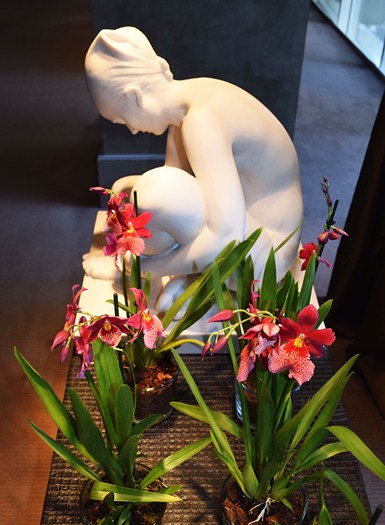
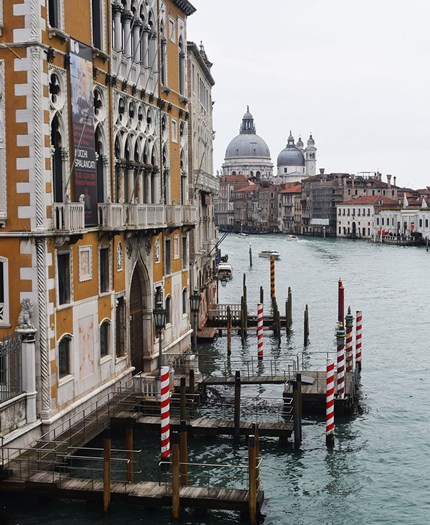
Above: Barcelona, left, and Venice are two cultural stops on tour.
Maybe that’s why, even in these days of budget airlines, romantics like me still elect to use trains to get around Europe.
Train travel on the Continent, after all, is a gift wrapped in a ribbon of steel.
The company that does European train travel best is Eurail (http://www.eurailgroup.org), a consortium of rail and shipping firms that have banded together to provide foreign visitors with a seamless mode of travel — one pass gets you almost everywhere.
The Eurail Global Pass is what some friends and I elect to use on our 11-day journey through France, Italy and Spain, which actually starts in The Netherlands when I get off my KLM (http://www.klm.com) flight at Amsterdam’s remarkable Schiphol Airport; walk a few steps from the arrival hall to the Thalys Train (a Eurail partner — http://www.thalys.com) ticket booth, pick up my ticket and 10-day Eurail pass (they have to be shown together on trains to be validated), then take an escalator down to the convenient train station below the airport where I board my Thalys coach bound for Paris — the first stop on our tour.
The high-speed Thalys train is packed with foreign travellers and European execs — they love the convenience of the free onboard Wi-Fi service — and as the train pulls out of the station I’m awed by the flat Dutch countryside that’s awash in colour — it’s tulip time in Holland.
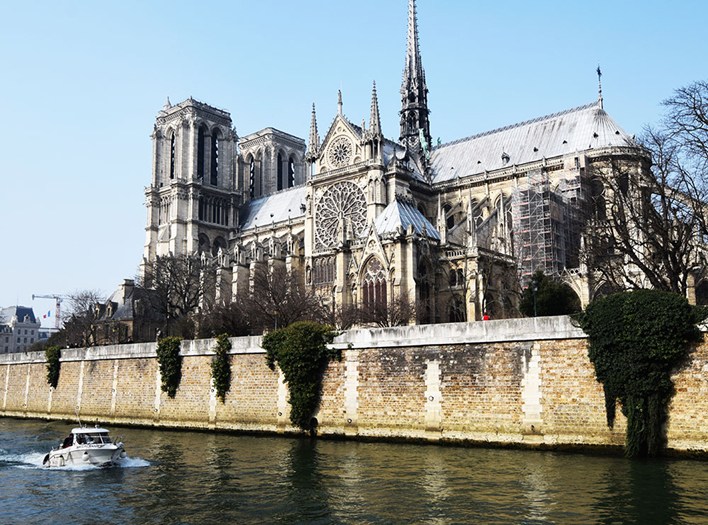
Above: Paris and Notre Dame are always a good place to stop.
The 2.5-hour journey, which takes me past enchanting Brussels, ends at Paris’ Gare du Nord (station), where I meet up with my friends for a two-night stay in the City of Light.
Our Paris visit has many highlights:
• We discover two affordabe hotels — the chic Fred (http://www.fred-hotel.com/en/) and its sister property Hotel Max (http://www.hotel-max.fr) — in the 14th Arrondissement, close to all the major sites.
• We are led around the historic Marais District, comprised of Paris’ Gay and Jewish quarters, Notre-Dame Cathedral, the flower market, “love-locked bridges,” incredible St. Gervais, tony Rue des Francs-Bourgeois and Place des Visges by the husband-and-wife guide team of David Downie and Alison Harris (http://www.parisparistours.com).
• I learn all about Paris’ café culture from an entertaining ex-pat American and Paris expert named Terrance Gelenter (http://www.paris-expat.com).
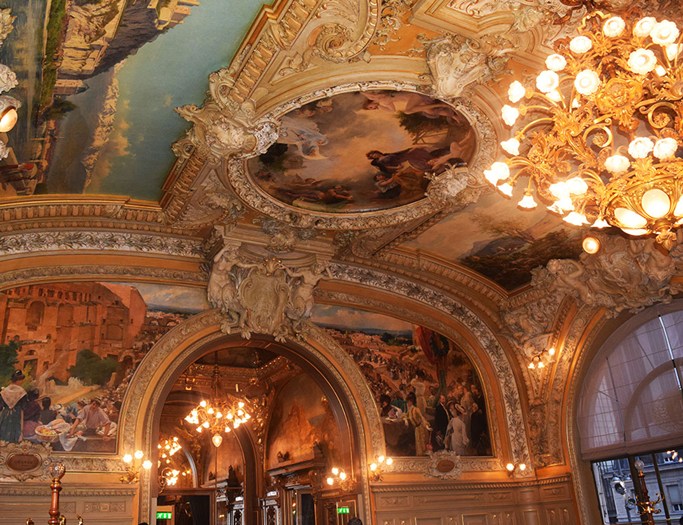
Above: Trains stop at some iconic stations like Paris' Gare de Lyon.
• We enjoy wonderful dinners at the Restaurant Le Zeyer and Moulin Vert and great lunches at some local cafés that the guides introduce us to.
Our time in Paris, however, goes by like a speeding train.
Next stop: Venice.
We take a cab to Paris’ Gare de Lyon where we board a Thello Train (http://www.thello.com) — a new Eurail partner — for an overnight journey through France and Switzerland before reaching Rome’s capital of romance, Venice.
While our train is being readied, we have time to explore the historic station that was built in 1900 for the World Exposition. Most trains that leave from here, including the high speed TGV, are destined for southern France and Italy.
One of the station’s many highlights is its famed restaurant Le Train Bleu, whose lavish decor, frescoed ceilings and massive chandeliers make it more suited as the main dining room of the Elysee Palace than a railway station “café.” The restaurant was originally called “Buffet de la Gare de Lyon” but was renamed Le Train Bleu in 1963 in honour of a famous train of the same name.
We book “First Class” cabins on the Thello train but the accommodation does not meet our expectations. While clean and comfortable, Thello’s idea of “First Class” and ours differ significantly — no in-room washroom and I’ve seen better dining cars in VIA’s Economy Class trains.
That said, I’m quickly lulled to sleep by the hum of steel wheels gliding along the tracks and awake in the middle of the night to find we’ve stopped in Lausanne, where the Swiss Alps are silhouetted against the night sky — beautiful!
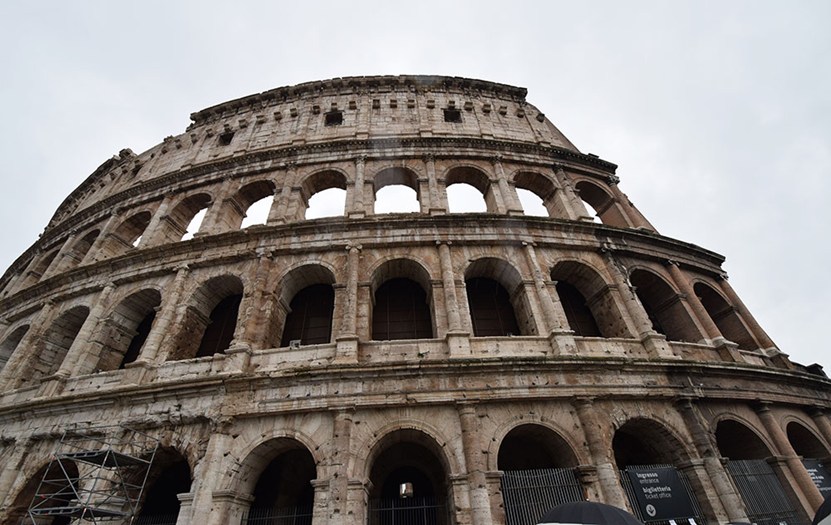
Above: Stopping in Rome to admire its ancient history is so inspiring.
We cross the Italian border just as the sun starts to appear on the horizon and soon we begin to see the domes of Venice spotlighted under the morning rays. When we reach the city’s Santa Lucia Station, we bound from the train, hurry across the Ponte della Costituzione and through Piazzale Roma to reach the Hotel Papadopoli Venezia (http://www.hotel-papadopoli-venezia.com) — a very impressive property — where we quickly drop our bags and rush off to see this great city’s highlights. Too many, by the way, to absorb in the 24 hours we’ve budgeted for this stop.
I get lost in the maze of streets leading off St. Mark’s Square, which is crowded with enthusiastic Chinese tourists. Sadly, the centuries-old glass and mask shops that once thrived near St. Mark’s have been replaced by high-end fashion stores — Gucci, Dior, etc. — which cater to the Chinese. That means the city’s traditional craftspeople have been pushed deep inside Venice. An unexpected benefit as I search through the labyrinth of streets to find them is that I discover quiet little neighbourhoods and enjoy glasses of wine at quaint cafés while listening to Vivaldi’s romantic music seep out the doors of one of the area’s grand churches.
We’re up early the next morning to catch another Eurail partner train — Trenitalia (http://www.trenitalia.com) — to Rome and its state-of-the-art First Class cabins restore our faith in luxury train travel. The service in the Frecciargento car — which means Silver Arrow — is pure gold and this train dispels all those old tales you may have heard about how bad the Italian train system is. Not only do we leave Venice on time, but the futuristic Trenitalia train gets us to Rome a few minutes early.
That’s good, because we have another action-packed schedule in the Eternal City.
The two smartest things we do in Rome is to first check into the back alley but very chic Hotel Relais Orso (http://www.relaisorso.com/en), a divine little property tucked away in a small cobbled street that’s within walking distance of the Vatican, Piazza Navona and the Spanish Steps. The historic hotel once served as the Vatican prison and is one of the most affordable and unique — square toilet seats — properties in Rome.
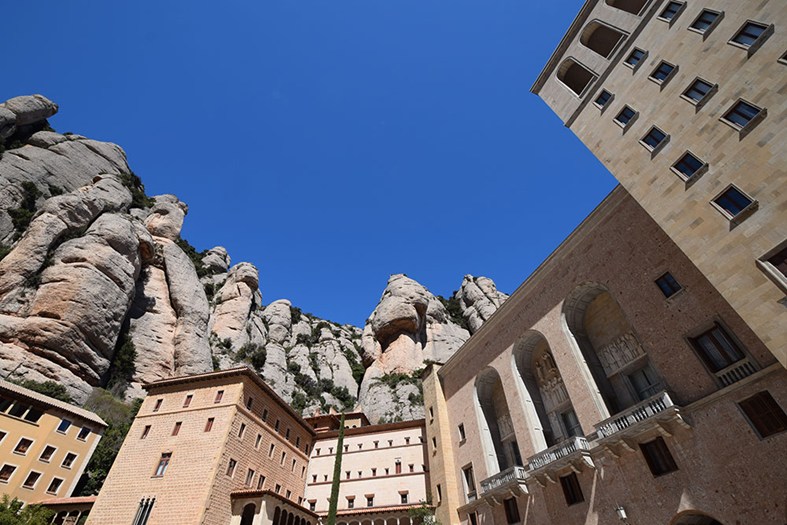
Above: A side trip to Spain religious icon Montserrat is a real eye opened.
Secondly, we secure the services of an extraordinary tour guide by the name of Stuart Harvey (http://www.romepersonaltours.com), an ex-pat Brit who has become an expert on all things Rome.
On Day One of our tour with Harvey, we explore the city’s squares and fountains — Trevi Fountain, even though most of it is wrapped in scaffolding while being refurbished, still looks very impressive. Harvey shares with us his vast “inside” knowledge of the Spanish Steps, Pantheon, Temple of Hadrian and Piazza Navona before introducing us to the cats that guard the Largo Agrentina, site of Caesar’s assassination. What a purr-fect way to end Day One of our Roman holiday.
Harvey arrives early on Day Two because he has lots planned for us — “the Forum, Colosseum and Arch of Constantine quickly fill up with tourists so it’s better to get an early start,” he tells us.
Harvey’s incredible knowledge of each site and their importance during Roman times amazes us but he keeps the best for last — a visit to the 11th-century San Clemente Basillica, which sits atop two 1st-century Roman buildings is the highlight of the entire trip for me, so far.
We’d need two years, not just two days, to truly explore and appreciate all that Rome has to offer, but Barcelona waits.
Knowing this was going to be a hectic trip across three remarkable countries, we opt to take a ferry to get to Catalonia. The Grimaldi Company (http://www.grimaldi-lines.com/en), another Eurail partner, offers crossings from Italy’s Civitavecchia (Rome’s port city) to Barcelona and we take the opportunity to catch our breath during the 36-hour voyage.
To get to the ship from Rome, we hop aboard the Frecciabianca train and an hour later we’re sitting in the ferry terminal with hundreds of energetic teenagers, part of a large school group returning to Catalonia’s historic capital.
Grimaldi’s M/V Roma is massive, capable of accommodating over 3,000 transports and 215 cars on its lower decks while its upper decks look more like a luxury cruise ship with 411 spacious cabins, 50 junior suites and 19 owners’ suites. We each reserve one of these beauties that come with an oversized living room, bedroom and bathroom. The ship also boasts a variety of dining options, including a fine dining room with some excellent menu choices.
Thanks to the presence of the teenagers, a party mood prevails during the crossing from Italy to Catalonia with a middle-of-the-night stop in Sardinia, which my friends and I sleep through thanks to some very comfortable beds.
After the M/V Roma docks, we check into the Hotel Arts Barcelona (http://www.hotelartsbarcelona.com/en), a 5-star masterpiece nestled along the harbourfront that affords guests incredible views of the city and supplies the best service in a city renowned for its hotel hospitality.
As the name suggests, the hotel puts an emphasis on “art” and because there’s so many pieces scattered about the rooms and public spaces, sometimes we think we’ve booked into an art gallery instead of a hotel.
The artful flower arrangements in the lobby are especially eye catching.
Next day we hop aboard an FGC (Ferrocarrilis de la Generalitat de Catalunya) train and take a breathtaking journey through some gorgeous mountain scenery to reach Catalonia’s most important religious retreat, Montserrat (http://www.montserratvista.com/en), which dates back 1,000 years.
After leaving the main FGC line, we transfer to a funicular known as Santa Cova that chugs up the steep slopes along a narrow track that clings precariously to the side of the dramatic rock formations.
We spend half the day exploring the impressive monastery, its informative museum and listen to the angelic voices of its world-renowned choir in the 16th-century basilica — it’s where the revered statue of Our Lady of Montserrat stands — before returning to Barcelona for a tour through the impressive Picasso Museum (http://www.museupicasson.bcn.cat/en/) in the city’s Old Quarter.
The day ends with a Catalonia cooking lesson at the Cook & Taste culinary school before returning to the hotel and a nightcap in the happening Frank’s Bar.
The final day of our Eurail trip starts with another short train journey to magical Figueres (http://www.catalunya.com), the hometown of Salvador Dali, where the incredible museum (http://www.salvador-dali.org/museus/teatre-museu-dali) he planned before his death now stands as a testament to his artistic genius — or madness, if like me, you are not a big fan of his surreal style.
However, the museum is informative and a delight to tour but I find the town even more fascinating. We’re treated to a lunch at Restaurant Duran, where Dali would eat with his friends whenever he was in Figueres.
Before returning to Barcelona, we take a short taxi ride to neighbouring Girona, a lovely town where colourful homes are mirrored in the still waters of the four rivers — Ter, Onyar, Galligants and Güell — that run through it. The old Roman city has spectacular churches to visit, narrow streets to wander and the ancient Jewish Quarter is one of the best-preserved in Europe.
On the train ride back to Barcelona — we spend our last night at the Hotel Barceló Sants (http://www.barcelo.com/BarceloHotels/en), maybe the best railway station property in all of Europe — my friends and I compare notes on what we’ve seen and experienced on this trip of a lifetime with Eurail and its partners, which has allowed us to see Europe at ground level.
We dread going to the airport the next morning to catch our flights home and one of the group muses: “I live for the day when they run a train tunnel under the Atlantic so I never have to be strip searched at an airport again.”
We all agree that would be great — but only if Eurail ran it.
Information
HOW TO USE A EURAIL GLOBAL PASS: 1. Before making your first journey, activate your pass at your travel agent you purchased the Pass from or in Europe at a train station ticket window. You must activate the Pass within six months after buying it. / 2. Read the Eurail Global Pass Guide prior to your departure. Bring it along on your journey, as well as the Eurail Map. / 3. Before boarding a new train, bus or boat, you must fill in the Travel Report details. If you have a Flexi Pass, enter the date in blue or black ink (no pencil) in the Travel Calendar on your Eurail Pass Ticket. / 4. Keep your Eurail Pass, possible train reservation tickets and your passport available as these need to be shown together to the various train conductors. / 5. Guard your Eurail Pass as you would cash. There are no refunds for lost or stolen Eurail Passes. / 6. Note that the Eurail Pass is valid for all trains and boats/companies printed on your Eurail Pass ticket, or in the case of a Global Pass, valid in the countries and companies printed on the Pass Cover. The Rail Planner App specifies the different participating railway companies and shipping companies. / 7. Note that for free passage on international ferry routes, your Eurail Pass must be valid for the country of departure AND the country of arrival. For discounted passages, the Pass must be valid for the country of departure OR the country of arrival. / 8. The Eurail Pass entitles you to extra benefits. Check the Rail Planner App for the list of extra benefits such as free or discounted transportation on busses, ferries, internet providers and hotels. / 9. In several major train stations, you will find Eurail Aid Offices where you can get information and assistance with reservations. / Download The Rail Planner App! This App allows you to look up train information, no matter where you are. It works offline and gives you quick access to departure and arrival times for European trains. The Rail Planner App is a free download, available for iPhone and Android. On your mobile phone, go to the App Store (for iPhone) or Google Play (for Android) and search for Rail Planner App. / Choose the right Eurail Pass! Eurail Global Pass is the right choice when you want to see as much of Europe as possible. You can travel by train in and between 28 countries, all with one rail pass. / Visit your local Travel Agent or Eurail Group’s Official Sales Agents to select your best Eurail Pass options or go to
www.eurailgroup.org/eurail-vendors